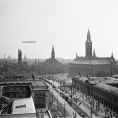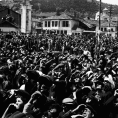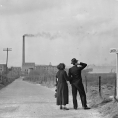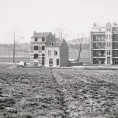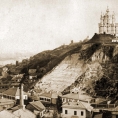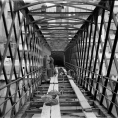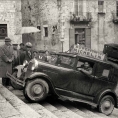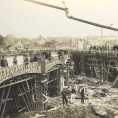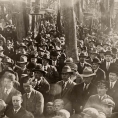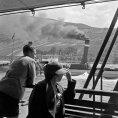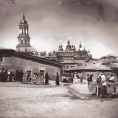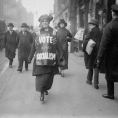Since its invention in 1839, photography as a visually descriptive medium has been used to record, inform and report: photographic images offer a view of reality with a high measure of authenticity and authority, almost as trustworthy as seen through our own eyes. This quality and the importance adhered to it, explain to some extent the early popularity of documentary photography. As a whole, this photographic repertoire attests to the transformation of Europe, juxtaposing disappearing habits and customs, upcoming tendencies and new ideas in ever-changing cityscapes.
In the 19th century, the process of urbanization took a decisive turn: as the new industries required a concentration of labor close to power sources, such as water and steam, small areas were to house large populations of workers. Housing conditions were often miserable, and laborers mostly lived in polluted and crowded slums reigned by violence and disease. Still, thousands of people fled the countryside to go live in the city, attracted by the promise of paid work. Within the span of a few decades, industrial villages grew to towns and cities, and the formerly scattered pattern of highly populated regions transformed into an early modern Europe dominated by buzzing metropolises.
More people in the city, meant a need for more steady commercial zones: shops replaced itinerant salesmen, and already in the 1830s the first department stores were to open their doors, kicking off a new era of big trading businesses. To accommodate shopkeepers and consumers, street plans were often designed as a grid, allowing city centers to expand infinitely but thereby neglecting social concerns and human needs.
Reacting to the failures of the industrial city, the late 19th century saw the rise of a social movement for urban reform. Urban planning was to allow the dreams of an ideal city, providing adequate sanitation infrastructure and a good circulation of people and goods in an aesthetically satisfying setting, to come true. With new legislations supporting such plans and with the erection of a large amount of new structures, housing conditions gradually improved towards the end of the 19th century, furthered by the enhancement of the urban environment by the implementation of play areas, sports grounds and other facilities for outdoor recreation. Public parks in particular offered an escape from daily life by imbedding an almost romantic landscape idiom in cityscapes dominated by business and industry.
One of Europe’s most important city planners was Georges-Eugène, Baron Haussmann (1809-1891): his design for a Paris with straight arterial boulevards and a symmetrical positioning of squares, encompassed the demolition of antiquated structures, the construction of upscale apartments and the displacement of poor people from central areas as well. This plan inspired reforms in many European cities until the turn of the 20th century.
Cityscapes were altered by technological, industry-driven advances in the domain of transportation as well: in the beginning of the 19th century, massive road and canal building programs were instigated, steam ships were to be found on every major stream and infrastructure allowing for oceanic transport soon followed. The railway, initially intended to haul coal from mines, was developed for intercity transport during the 1820s and commercially exploited from the 1830s on, fanning out to all western European countries in the next decades.
Starting from the latter part of the century, mechanized vehicles came to dominate transportation, soon causing automobiles and buses to congest the streets in older city parts. City planners had no choice but to take these considerations as a focal point in their reforming activities, designing – among others – new roads, bridges and traffic circulation plans, as well as subway systems that were to transport the working and shopping masses of London and Paris from the beginning of the 20th century onwards.

